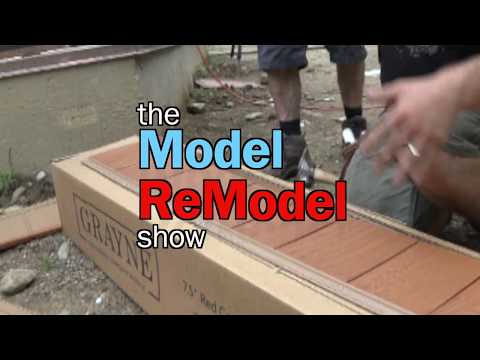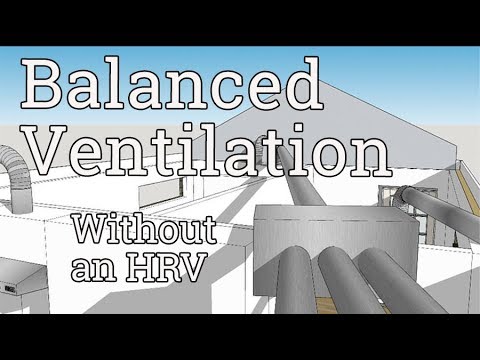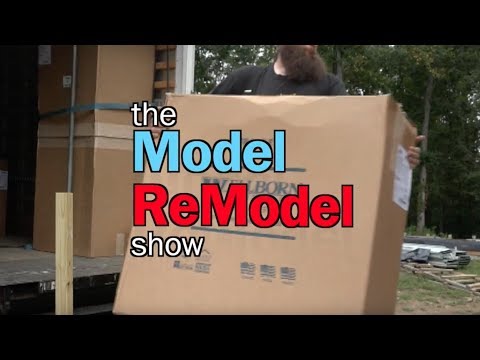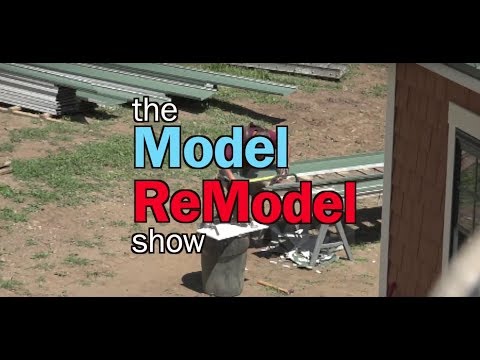A simple and affordable balanced ventilation solution for small tight houses
Last time on the Model Remodel Show, we got a special package all the way from Idaho. Inside the box was a custom shower unit ready for tile which is epoxied into place and then grouted. The process is fast
"Started this morning with no shower in this bathroom, and now about six and a half hours later—and with cameras following me the whole time—we have a complete shower. Watertight and ready for valves and trim."
—Ben Bogie, remodeler
The walls snap into the pan, screw into the suds, They align easily, and snap together at the corners.
Ben was pleased with the result.
"Really impressed with the quality from Bestbath. We've used a number of different manufacturers over the years, all with varying levels of quality in terms of the fit and finish. Hands down, of the ones that we've used, this has the nicest build quality and the easiest assembly."
And that’s the first finished surface inside Professional Remodeler’s 2017 Model Remodel
This time we’re looking closely at indoor air
One of the benefits of building a supertight, well-insulated house is that you get to downsize your HVAC system. Because we have such a tight, well-insulated house, we have to add mechanical ventilation. Our HVAC and ventilation strategy for this house is off of minisplit systems, but Fujitsu.
We have the main body of the house being handled by a 12000 btu wall-mount unit, the master bedroom being handled by a 17,000 btu wall-mount unit and the laundry and bath areas being handled by a 7,000 btu slim duct unit.
What we have right here is a return plenum. feeding the slim duct unit, which is down stairs in the mechanical area suspended from the floor system. The return air grill will have a MERV 11 filter in it. Air comes up through branch ducts right here, that's then distributed over our head to the laundry area and to the bathroom area.
When you talk about mechanical ventilation, you talking about basically four types of systems.
- Supply only
- Exhaust only
- Balanced
- Balanced with energy recovery
We're doing a balanced system, meaning that we have powered fans pulling air into the house as well as exhausting the same amount of air, no energy recovery. Realistically, on a house this size, the energy penalty of not having energy recovery is minimal; it doesn't justrify the cost of stepping up to an energy recovery ventilator."
Before we start cutting metal and our hands, we’ll make a napkin sketch
"For our mechanical ventilation, we have two ducts that are the heart of our system essentially. One of them goes outside to bring fresh air in through a duct to the mechanical room, where it'll go through a powered and filtered blower.
The Air King QuFresh Supply fan tempers the incoming air to improve comfort.
"and then it'll go up through another duct into the attic into a branch box where will then split out and be distributed around the house.
Dumping the fresh air into closets keeps the house comfortable without creating a drafty feel.
We have an Air King range hood that will function for exhaust for cooking, but it also runs continuously, to draw a set amount of air out of the house
In the bathroom, is an Air King Eco Exhaust vent fan, which is placed above the shower, and exhausts out the gable end.
The guys get to installation with Frank beginning in the bathroom with the bath fan.
- He slides in the brackets and then slips the fan into place, onto pre-sunk mounting screws.
- With the fan in the right spot, he twists a few wire nuts into place and tucks the wire away.
Meanwhile, Ben readies the supply fan.
It is adjustable to control the incoming air for temperature and humidity. The spatial analysis IQ test begins now,
...and he clears the first hurdle.
Confident that he has a handle on things, he mounts the wood to the wall, and he attaches the fan to the wood. Because this is a six-inch duct, there is enough volume to overcome the pressure loss from a direct 180-degree turn right out of the fan box.
Then it’s back to Rubik's Elbow.
With the top and bottom fittings set, he cuts a piece to fit between and then removes the lower elbow. Working down from above, the ducts are screwed together into a single unit, and then it is removed and sealed with mastic.
Every joint and gap are painted thick.
Int he basement, he seals the ductwork that is still in place.
While the mastic dries, we’ll look forward to next time when we go from the basement to the roof to lay down some membrane along the eaves, cut up some edge metal, and get ready for roofing at Professional Remodeler’s Model Remodel.











